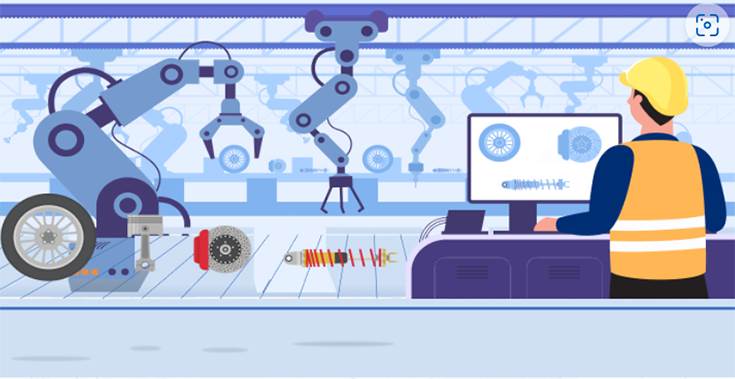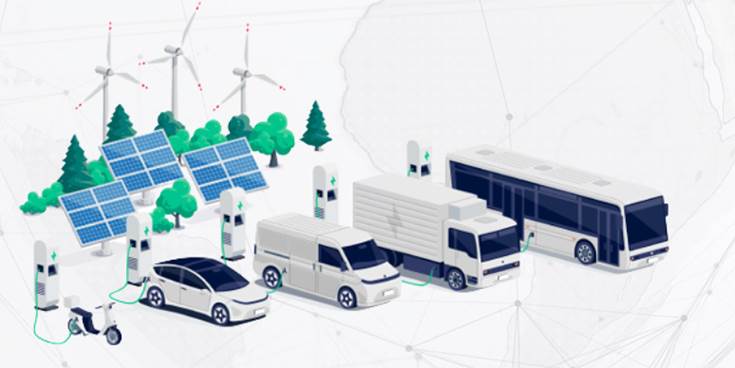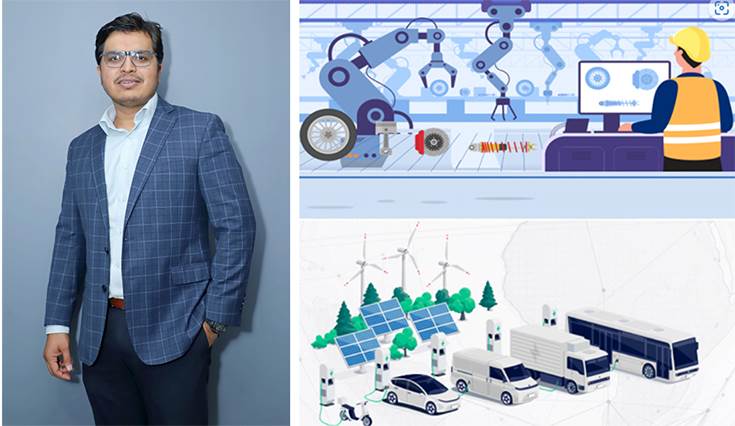CapGrid, a Gurugram-based automotive- and industrial sourcing and procurement technology start-up operating since September 2021, has outlined an ambitious future growth strategy designed to multiply its revenue, currently pegged at Rs 100 crore, to up to Rs 5,000 crore over the next three years.
The company, which operates in the automotive and industrial segments, aims to solve OEMs’ complexity challenges with respect to low-value parts such as fasteners, gaskets, bearings, and wiring connectors among other small components that belong to the tail end (approximately 10-15%) of an OEM’s direct material spend in production of a new vehicle.
CapGrid, which has developed expertise in 8-10 categories of parts, acts as a Cloud manufacturer for an OEM by having tie-ups with Tier-2 suppliers across India. At present, its OEM clientele includes the likes of ACE Construction Equipment, Batt:Re and Omega Seiki Mobility, across the two- and three-wheeler, as well as tractor and off-highway segments. The company’s USP is simplifying the complexity of dealing with scores of small and medium vendors and offering a single source of manufacturing, delivery, and quality responsibilities – by taking charge of all these aspects of a component.

CapGrid CEO Dheeraj Kumar Tiwari: “We have been able to slash the (OEM) system inventory, and therefore, the cost of credit, by a third.”
“We have reduced the touchpoints of our customers from almost 100 suppliers for such low-value parts to just one. Typically, we provide at least 100-200 parts for an OEM, and for a few of our large customers in the tractor, two- and three-wheeler categories, we are already taking care of over 500 parts,” Dheeraj Kumar Tiwari, co-founder and CEO, CapGrid Solutions told Autocar Professional.
“Moreover, Tier-2 suppliers across these categories of components are small companies with turnovers typically in the range of Rs 100 crore. Therefore, it becomes extremely difficult for an OEM to directly infuse technology at these players,” he added.
While the company has developed its proprietary Supply Chain Tower back-end suite, which helps reduce inventory at OEMs by as much as two-thirds, bringing it down from a level of 45 days to only 15 days, it is also investing and deploying its homegrown technology at its key supplier partners to allow for enhanced visibility in terms of manufacturing quality, supply chain, as well as inventory.
“Just by creating visibility, we have been able to slash the system inventory, and therefore, the cost of credit, by a third. Presently, an OEM can have real-time visibility of the inventory at our seven warehouses, including the transit visibility. We are aiming to scale it to manufacturing and quality visibility as well,” explained Tiwari.
 CapGrid uses its cloud manufacturing supplier network to speed up the development by 5x. Proprietary tech ensures a control tower view of all ongoing development with all datapoints illuminated.
CapGrid uses its cloud manufacturing supplier network to speed up the development by 5x. Proprietary tech ensures a control tower view of all ongoing development with all datapoints illuminated.
Enhancing Tier-2 capacity utilisation
With a major chunk of Tier-2 suppliers, who manufacture components such as wiring connectors, fasteners, gaskets as well as bearings, typically operating at a 50-60 percent capacity utilisation rate, CapGrid is leveraging its technology-led, recurring order and demand-aggregating model to drive up their business.
The company claims it has been able to bring in fresh orders of up to Rs 150 crore for its Tier-2 partners, enhancing their capacity utilisation to up to 90 percent, and prompting many to plan their next phase of capex to get ready for future demand.
CapGrid is also enhancing economies of scale by tapping into the common volume of parts being ordered by various OEMs. “Economies of scale works more effectively in small components such as fasteners. We are trying to create economies of scale at our suppliers, and want to be reach a stable state of operations to offer unbeatable rates at scale,” said Tiwari.

By becoming a single-window partner, CapGrid meets OEM needs through dedicated capacities of its QC-certified Cloud manufacturers and helps spare parts divisions meet their demand on time with high quality and at best rates.
Technology driving core operations
The new-age start-up has a 110-member team with around 10 percent of the workforce deployed in technology development; it is technology which is enabling its core operations daily. “Being in a business of recurring orders and supplies, we have automated the supply chain to a fair extent. For instance, all our Purchase Orders (Pos) as well as material delivery reminders are automated.”
“For the sourcing team, the highly-efficient RFQ sending process is enabled by technology in the back-end, and there is an element of Machine Learning that we deploy to empower even a new buyer to negotiate with the supplier at the same level as his or her much-experienced colleagues,” enumerated Tiwari.
He added that most of the machines being deployed to manufacture such parts have programmed logic controls or PLCs, and are automated by nature. “We only need to monitor throughput and quality, which are the two key metrics to enhance productivity,” said Tiwari.

With EVs gaining traction in the Indian market, CapGrid aims to assist EV OEMs source localised components speedily.
Eyeing global expansion, future growth
CapGrid which started with a seed fund in 2021, went on to close its first round of Series-A funding in January 2023, when it raised Rs 57 crore at a Rs 210 crore valuation from Nexus Venture Partners. While it is cornering 15 percent gross margin and is already profitable at a unit level, CapGrid aims to double margins once it expands turnover, and achieves scale. “We plan to grow our revenues to Rs 4,000 to 5,000 crore in the next three years, and at scale, I feel we can push our gross margins to even 25-30 percent,” Tiwari said.
Since there is a huge element of manufacturing value addition involved in its business model, CapGrid is witnessing heightened interest from potential investors and plans to go into its next round of fundraise around end-CY2023. The company also has ambitions to go global and solve similar challenges being faced by automotive OEMs in markets such as the US and Germany.
“Next year, we want to go global in terms of supply base first, and then potentially also start global factories later. South-East Asian countries such as Indonesia, and Vietnam, as well as Mexico, and Turkey are huge suppliers of such components to OEMs in the USA and Germany.”
“We see ourselves evolving as a global Cloud manufacturer which has capacity and is able to get components manufactured and delivered,” Tiwari signed off on a very confident note.
